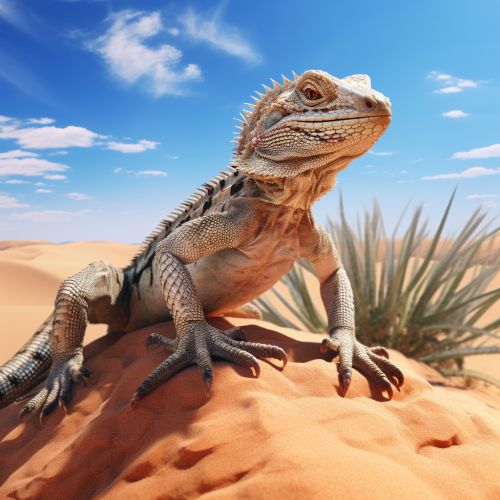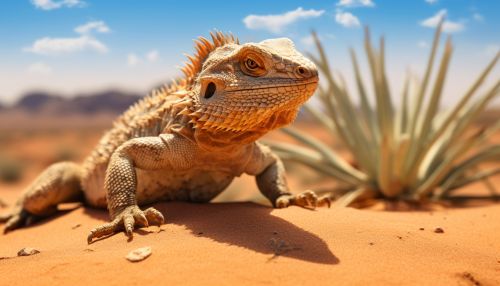The Biological Mechanisms of Animal Adaptation to Desert Life
Introduction
Desert ecosystems represent some of the harshest environments on our planet, with extreme temperatures, limited water availability, and intense solar radiation. Despite these challenging conditions, a variety of animal species have evolved to thrive in desert environments. This article explores the biological mechanisms that enable animal adaptation to desert life.
Physiological Adaptations
Physiological adaptations are changes in an animal's internal body functioning that increase its survival rate. These adaptations are often related to water conservation, temperature regulation, and energy efficiency.
Water Conservation


Desert animals have developed various strategies to conserve water. For instance, the dromedary camel can drink large quantities of water at once and store it in its body tissues, allowing it to survive for up to a week without drinking. Additionally, it has a unique ability to withstand dehydration by allowing its body temperature to fluctuate, thereby reducing the need for evaporative cooling.
Temperature Regulation
Desert animals must cope with extreme temperature fluctuations. Many desert animals, such as the fennec fox, have large ears that serve as heat radiators, helping to dissipate heat and regulate body temperature.
Energy Efficiency
Energy efficiency is crucial for survival in the desert, where food resources are often scarce. The kangaroo rat, for instance, has a highly efficient metabolism that allows it to survive on a diet of dry seeds, obtaining all the water it needs from the metabolic breakdown of these seeds.
Behavioral Adaptations
Behavioral adaptations are changes in an animal's behavior that increase its chances of survival. In desert environments, these often involve strategies to avoid heat and conserve water.
Nocturnal Activity


Many desert animals are nocturnal, active during the cooler nighttime hours and resting during the heat of the day. This behavior helps them avoid the extreme daytime heat and reduces their need for water.
Burrowing
Burrowing is another common behavioral adaptation. Animals like the desert tortoise and the jerboa dig burrows to escape the heat during the day and to retain warmth during the cold desert nights.
Morphological Adaptations
Morphological adaptations are physical changes in an animal's body structure that increase its survival rate. In desert environments, these often involve modifications to reduce water loss and cope with extreme temperatures.
Body Size and Shape
Smaller body size and elongated body shape can help reduce water loss and heat gain. For example, the desert scorpion has a flattened body that allows it to hide under rocks and in narrow crevices to avoid the sun.
Coloration


Desert animals often have coloration that matches their environment, providing camouflage. This not only helps them avoid predators, but also reduces heat absorption by reflecting sunlight.
Conclusion
Desert animals have evolved a range of physiological, behavioral, and morphological adaptations that enable them to survive and thrive in some of the harshest conditions on Earth. Understanding these adaptations provides valuable insights into the remarkable resilience and versatility of life.
